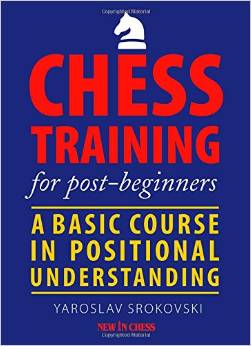Chess Training for Post-Beginners
A Basic Course in Positional Understanding
Yaroslav Srokovski

Russia may not have had a World Champion since 2007 nor won a Chess Olympiad since 2002, but there is no question it is the number one chess country in the world with ten players in the 2700 club including three in the top ten. No other country comes close, but a good argument can be made that Ukraine is number two with five players rated over 2700 and wins in the 2004 and 2010 Chess Olympiads.
This is a remarkable achievement for a country that has suffered from economic problems since achieving independence in 1991. Unlike Russia, Armenia, Azerbaijan and China which all receive significant state funding elite players from Ukraine receive modest honoraria for representing their country.
One of the reasons that the Ukraine has been able to maintain its tradition of excellence is excellent coaching. Western readers were able to get a taste of the quality of this work with the publication of PERFECT YOUR CHESS (Gambit Publishing 2007) by Andrei Volokitin and Vladimir Grabinsky.
That excellent book was aimed at the high end – players rated 2300 on up – but now a work from the Ukraine geared toward a much broader audience has been published. CHESS TRAINING FOR POST-BEGINNERS: A BASIC COURSE IN POSITIONAL UNDERSTANDING by International Master Yaroslav Srokovski is targeted at club players rated 1400-2200.
There are 12 chapters in Srokovskis book which contains 129 examples. Each chapter concludes with training exercises to reinforce the material. There are a total of 54 of these exercises each of which is supported by detailed solutions.
The chapters are:
1. Pieces cut off from the play
2. Open files
3. Strong and weak squares
4. Weak complexes and weak diagonals
5. Pawn majority on the queenside
6. The strength of the passed pawn
7. Weak pawns
8. The king in the middle
9. Good knight versus bad bishop
10. Good bishop versus bad knight
11. The advantage of the bishop pair in the endgame
12. The advantage of the bishop pair in the middlegame
There is nothing magical about the material that Srokovski covers. It is standard middlegame fare but the examples are well chosen and the explanations clear. The target audience of 1400-2200 might be appropriate in countries with a high standard of play like the Ukraine, but for Western Europe and the United States where most players develop without a trainer and have gaps in their knowledge 1800-2400 might be closer to the mark.
Recommended
